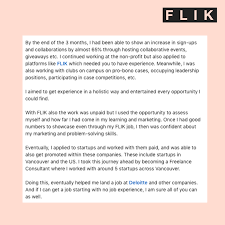
Career exploration can be an effective way to help students find out more about their interests and learn more about what they are good at. Although students may not be sure what career they want, there are many resources to help them choose the right path. Below you'll find many resources, strategies, and tools to help students start.
Resources to help you explore your career options
Many resources are available for career exploration. These include those sponsored by local, state, or national organizations. The National Council for Career Development and Employment and Training Administration (ETA), for instance, have a website called Career Explorer that includes detailed descriptions for hundreds if occupations. Each description includes detailed information on job duties, training requirements, and pay. These resources can be used to help you determine which career path is best for you.
You can also explore career options through online workshops, career assessment assessments and the National Center for Faculty Development and Diversity. The National Center offers many resources that are applicable across the academic fields. For example, if you are considering a career in academia, you can learn about the available job opportunities by taking an online assessment called MyIDP. You can also find resources about STEM careers on the website.

Strategies to support students exploring careers
Teachers can use a variety of strategies to encourage students to explore career options. First, students can be involved in research. To learn more about different career options, students can access school-approved websites. Many schools pay for career exploration software, which allows students to explore different career options. Another option is to give lectures about careers using classroom resources, and the teacher's expertise in the field.
After students have begun their research, it is now time for them to engage in evaluation. The evaluation stage is where students must evaluate their research and pick the most interesting. This allows students to get a better understanding of their career choices and help them identify related careers.
Students can find resources that will help them explore their career options
Career exploration is an important part of a student's education. It helps students to decide what field they want to pursue, and it gives them a sense of direction. Resources to help students explore careers are available online and in classrooms. These resources provide information and take-home assignments that help students to identify their interests. These activities can be used to teach students about non-degree paths and apprenticeship programs.
To narrow down the choices, students should look at two or four possible areas and do some research. Next, students will need to identify their strengths and what kind of work they are most interested in. Next, students should begin looking for jobs that combine these two criteria.

Students can use tools to explore career options
One of the most crucial steps to building a successful career is career exploration. The right tools will help students determine the type of job they want and what kind of training is required. The students can then decide the best courses and extracurricular activities that will support their goals. This helps students to build self-esteem as well as a goal for their future. Unfortunately, many public schools do not offer courses that cater to students' interests. They are not equipped to properly prepare them for work.
Focusing on two to four careers is a good idea. After choosing a few areas, students need to research them in order to discover which one best fits their skill set and interests. Then they can research what jobs might suit their skills. After narrowing down their options for career, they can start to apply.